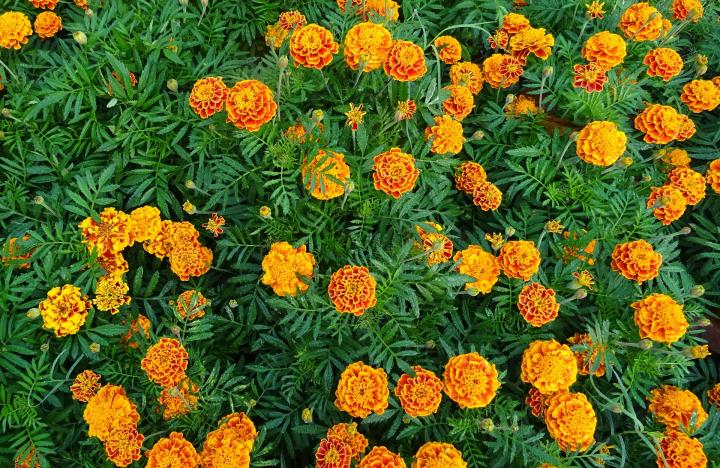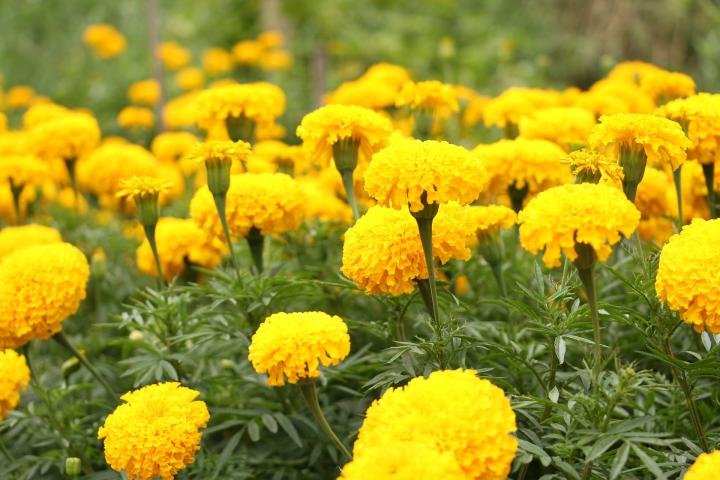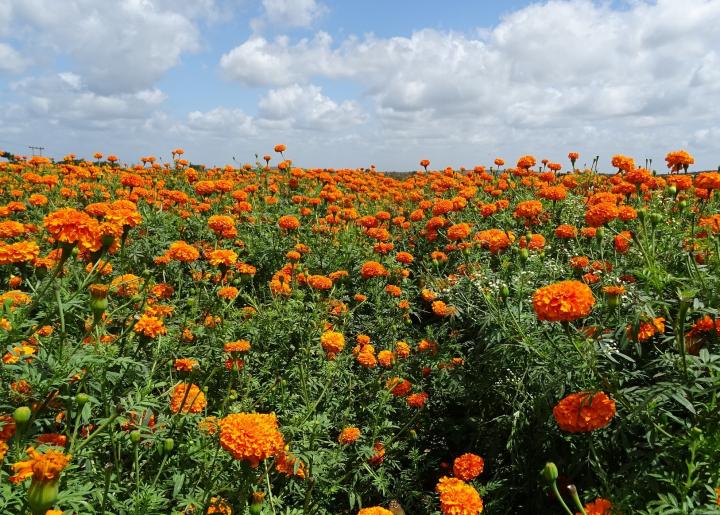
Sunshine on a Stem: Learn Why to Add These Sunny Blooms to Your Garden!
Read Next
Types
Marigolds have been stereotyped, but they offer tremendous variety. Both the American and French marigolds are generally aromatic, too, although some folks find the scent to be a bit overwhelming. Keep that in mind when choosing a planting site.
Marigolds have daisy- or carnation-like flower heads produced singly or in clusters. Although there are some 50 species, most we see in the garden are one of the following:
- Tagetes erecta (aka African marigolds, American marigolds, or Mexican marigolds): This species is the tallest and most upright marigold, reaching 3 to 4 feet in height and producing large, full flowers. According to Nate Dalman of the University of Minnesota Extension, “Despite the names, African marigolds did not originate in Africa and instead are called that because they were first imported to Europe via a trade route that passed through northwest Africa.” They’re native to Mexico and Central America and will thrive even under drought-like conditions.
- T. patula (aka French marigolds): This species tends to be smaller, bushier, and more compact than T. erecta. They are often wider than they are tall. Elegant and eye-catching, they have relatively demure flowers and usually grow from 6 inches to 2 feet tall. They are better suited to rainier conditions than the other Tagetes species.
- T. tenuifolia (aka signet marigolds): These petite marigolds do well in hot, dry sites and make for a beautiful edging plant. They rarely reach more than a foot in height.
French Marigolds (T. patula)
- ‘Little Hero’ Series: 7-inch-tall plants with large, double carnation flowers in 7 color combinations of maroon, orange, and yellow.
- ‘Hero’ Series: 10-inch-tall plants with double carnations, large (2-inch-wide) flowers in 7 different combinations of yellow, orange, and maroon.
- ‘Bonanza’ Series: 2-inch-wide, double carnation flowers in 5 different combinations of yellow, orange, and maroon on bushy, compact 8-inch-tall plants.
- ‘Aurora’ Series: 1-foot-tall plants with wide-petaled, anemone-like flowers in shades of maroon, yellow, and orange.
- ‘Janie’ Series: Early blooming. 8-inch-tall plants are perfect for container growing. Double carnation type flowers in 6 different combinations of yellow, orange, and maroon.
- ‘Boy O’ Boy’ Series: 6-inch-tall prolifically flowering plants with flowers in shades of maroon, yellow, and orange

American/African Marigolds (T. erecta)
- ‘Jubilee’ Series: 2-foot-tall plants with dense, double flowers in shades of yellow and orange.
- ‘Gold Coin’ Series: 1½- to 2-foot-tall plants with large (5-inch-wide) double blooms in gold, yellow, and orange.
- ‘Safari’ Series: 1-foot-tall plants with flat-topped, large flowers in shades of maroon, yellow, and orange.
- ‘French Vanilla’: 3-inch-wide flowers are pure creamy white. Minimal scent. Plants are 1½ to 2 feet tall.
Where to Buy Marigolds
Gardening Products
Comments
You can save seeds from this year's plants. Wait until the flower heads are brown and dried. Pinch the ends with your thumb and index finger of each hand, then pull apart and the seeds will slide out without any problem. The seeds are thin, black, and pointy.
Store the seeds in a cool and dry place and replant next year.
In some climates, you can just sow the seed in the ground now wherever you'd like them to grow next year.
- « Previous
- 1
- 2
- …
- 10
- Next »











At this point in the season, we would cut back up to one-third of the plant. Then fertilize lightly with a balanced plant food. It may take a week or two for the marigolds to recover but they should be fine. Next year, if you grow marigolds, you really want to pinch or cut back the new buds and foliage tips when they are 6 to 78 inches tall. This encourages branching to create a bushier plant that won't topple in the wind.